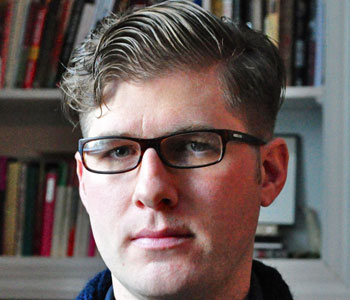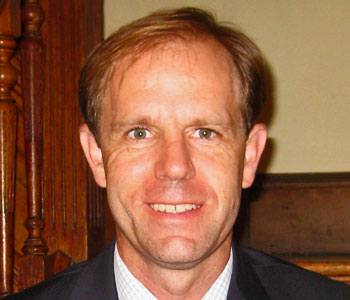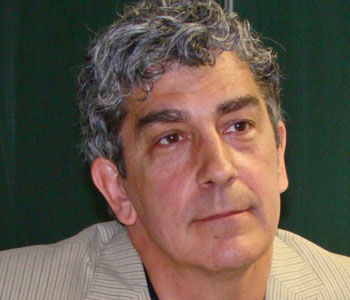Bryant Simon
Everything but the Coffee: Learning about America from Starbucks
University of California Press
320 pages, 6 x 9 inches
ISBN 978 0520261068
Obviously, this isn’t the first book about Starbucks. But Everything but the Coffee is first to examine the company’s rise and fall and look ahead to its uncertain future in the wake of the onset of the Great Recession. This book is also the first to see Starbucks not just as a good story or as an enviable business model, but as emblematic of broader and more disturbing cultural trends in the United States. And it is also the first book to explore what Starbucks really offers its customers and how it frequently promises way more than it delivers—from building a third place to ethically sourcing its beans.
Using Starbucks as a focal point and based on five years of probing the company and its customers in more than 450 stores in 10 countries, Everything but the Coffee looks at the larger and more troubling reach of everyday buying—of the entire branded consumer landscape—in America. What does this tell us about the United States at this critical moment? And what does buying do to us?
Buying, of course, is never a one-way street. What do our purchases take from us? How do our lattes consume laborers (and their bodies), our sense of place, our environment, and even our politics? Toward the end of the book, readers hear stories from shoppers striking, leaving, and avoiding the brands in favor other companies, often independents, that do a better job at fulfilling the things and desires Starbucks initially promised it would provide. But is this really a revolt or just more buying?

In many ways, bathrooms are an essential part of Starbucks’s value proposition, especially for urban customers.
Starbucks is not really all that special or unique. Despite its claims of good deeds and better works, the company, at the end of the day, is typical—typical of how business increasingly works and consumers increasingly consume.
Companies no longer sell products, at least not principally; they sell experiences and even more promises. That is what we pay for—we pay extra for things that makes us feel better and look better, things that communicate something about ourselves and meet our personal and collective desires.
For much of the first decade of this new century, Starbucks thrived by identifying and then marketing the broad desires of the American upper middle-class, David Brooks’ bobos and those who wanted to look like them. Like most groups, Bobos bought things—again not for their physical qualities—but so that they could distinguish themselves from others; so that they could not just keep up with the Joneses but separate themselves from the Joneses.
Starbucks, then, sold lattes as emblems of education, sophistication, and discernment. Its greatest business trick was to turn its drinks into symbols of taste and wealth, concern for the environment and the less fortunate. Mostly, it made lattes into everyday forms of conspicuous consumption. Who else had the money and good taste to waste $4 or $8 a day on coffee?
Turning coffee into an emblem of class standing and global concern translated into big business for Starbucks. Over the first five years of this century, the company opened a new store somewhere around the world every five or six hours. By 2007, it served over 45 million customers a week and generated $10 billion a year in revenues.
But Starbucks’ growth, and really the growth of promise making economy in general, was helped by another more far-reaching and troubling transformation in American life. The Seattle latte peddler’s hold on many in the United States grew out the nearly wholesale replacement of nonmarket civic society by a rapacious consumer society. Community has been usurped by buying, belonging with shopping. Without neighborhoods or clubs or unions or political associations to push back against the marketers, brand-induced consumption spread, really oozed, into every aspect of daily life.
Hefty doses of buying, advertising, and marketing were not new to America in 1995 or 2005. Neither was the branding of everything from fun-runs to urinal covers to rock concerts. Nor was the commodification of consumers’ deepest anxieties, desires, and aspirations all that new. It wasn’t even that Americans suffered, in the words of business writer Lucas Conley, from “obsessive branding disorder.”
What is new—and what makes our world both more alienating and more susceptible to the seductions of buying—is the withering of nonmarket relationships and the public institutions that in the past had pushed back against the market and brands to challenge them for people’s allegiances and identities.
The pullback of community, the state, and other binding agents allowed brands like Starbucks to sell more goods and garner greater profits by reaching deeper into our lives and consciousness and claiming spaces that civic institutions, including government, occupied in the past.
But while Starbucks occasionally talked and acted like an NGO or a political party, it never existed for the larger good; it worked for Wall Street and for shareholders. From the posters about health care for workers to the brown java jackets that promise to save the planet to the oversized drinks that invoke notions of extravagance, everything is there to get us to buy more.
By making claims to serve the larger good while lining their own pockets, the corporate players made it even harder for our already hampered civic institutions to reclaim legitimacy as vital actors in domestic reform and foreign policy. This corporate takeover of state functions carried with it costs well beyond the Starbucks premium.
We might consume Starbucks, but as we do, Starbucks consumes part of us—part of our environment, our culture, and even our politics.
On page p. 90 of Everything but the Coffee there is the start of a rather long riff on bathrooms that captures the way in which corporate powers, posing as public service providers, have taken advantage of the privatization of life. In other words, this is how larger public voids get turned into private moneymaking ploys.
In many ways, bathrooms are an essential part of Starbucks’s value proposition, especially for urban customers. But this is true because of our atrophied public sphere.
Numerous times while doing field work in New York, I watched as groups of women and men in Northface coats—displaying their upper-middle-class styles—walked into a store. Two went right to the bathroom, two got in the drink line, and two just stood there. When the friends reassembled, they had purchased a couple of lattes and a muffin. Starbucks, then, got eight dollars to rent out its bathroom.
The Northface brigades usually head straight to Starbucks, bypassing McDonald’s and Wendy’s, the bus station and public library. Surely, they know from prior experience that the coffee company keeps its bathrooms generally clean and well stocked. So did the editors of the Portland Phoenix. “We’ll come out and say it,” they wrote in the 2005 edition of the weekly alternative paper’s best of the year awards. “We don’t much like multinational corporations.” But when it came to grime and yellowy funk, they put aside their politics. “Starbucks,” they told readers, “has the cleanest bathrooms for us germaphobes. There’s just something pristine about those Starbucks bathrooms. Hypocritical, but when you’ve gotta go, you’ve gotta go (and sometimes, we don’t even really buy anything).” But sometime, then, they do.
Paco Underhill studies bathrooms, and to a certain extent gender, in retail spaces. Trained by the great city-watcher William Whyte as an anthropologist, he skipped out on academia and largely invented what he calls the “science of shopping.” These days, he gets paid a king’s ransom to watch what people do in stores, how they move, where they stop, and what makes them move on. Bathrooms, he mentions, can be crucial. His research has taught him that most customers, especially women, will pay a premium for products paired with bathrooms “with a clean baby-changing table and a working sink and trash can that isn’t spilling all over the floor.”
Clearly Underhill and Starbucks were on the same page when it came to bathrooms. With its spacious, sparkling clean, and nicely appointed bathrooms, the coffee company informs customers that it cares, even if it costs a little extra to keep these places spick-and-span. In this equation, customers repay Starbucks’ kindness with coffee purchases and word-of-mouth praise.
Once again, Starbucks adds to its business as a result of the tattering of the older social contract. Rutgers University geography professor Wansoo Im maps bathrooms. Great cities, he told a New Yorker reporter, have lots of public toilets. Paris does, and so does Tokyo. And New York did. In the 1930s, officials constructed a wide network of public restrooms. By the 1970s, pushed and pulled by crime and a budget crisis, city leaders cut funding for these bathrooms. But visitors, workers, shoppers, and walkers still need toilets, so they have to search for them in semi-private places, like Starbucks. A reporter once asked New York mayor Michael Bloomberg why the city doesn’t have more public bathrooms. We don’t need them, he responded. “There’s enough Starbucks that’ll let you use the bathroom.”
Starbucks, however, isn’t a public space. While it appears to offer equal access, in reality, it serves the needs of only some—another hallmark of the privatization of daily life and unequal distribution of resources that goes with these changes. People are always saying—often complaining—that Starbucks is everywhere. But it isn’t. Going back to the New York example, a Starbucks store sits on just about every Midtown corner and along every Village square. But there isn’t a Starbucks in the largely African American and Latino areas of the city above 125th Street, and neither is there one close to the projects by the Coney Island Boardwalk. There isn’t one in the Bedford-Stuyvesant part of Brooklyn, either. More than 1.3 million people live in the Bronx, and Starbucks operates less than a handful of stores in the borough. Manhattan, on the other hand, has only two hundred thousand more residents yet has two hundred more Starbucks. It is the better-off Bobos who have the better public bathrooms.
Even inside the stores, Starbucks isn’t so public. In the early years of the century, most Manhattan Starbucks locked their bathroom doors. To use the bolted facilities, you had to ask for a key. This seemed to be no problem for college kids in ski jackets or white college professors like myself. We ask for the key, no questions asked.
But for the homeless and for people of color—especially unattached men—things aren’t so simple and easy. Several times I have seen African American men go up to the counter for the key. Giving the man the once-over, the manager or the shift supervisor hesitates and says, “Have you bought anything? The bathrooms, you know, are for customers only.” Every once in a while, I saw a homeless person walk in and jiggle the bathroom handle. If it was locked, either he waited for the person to come out and grabbed the door before it shut, or he left. He didn’t waste his time asking for a key. Again, no matter what it says in its corporate social responsibility reports, Starbucks doesn’t operate its stores for the public good.
They rent bathrooms to people who will pay four dollars for a latte or fit the profile of someone who can afford to.

I want my book to trigger meaningful conversations—conversations about Starbucks, about buying, and about how to restore and invigorate civic life in this country at this moment when we perhaps need it the most.
Everything but the Coffee serves as a critical examination of Starbucks, looking at what it promises and what it actually delivers. Not surprisingly, Starbucks does a better job at fulfilling the need for decent coffee. When it comes to the desire for community, a cleaner environment, and a fairer global trade, what Starbucks customers get is more of a nod, a thin veneer of what they really want. Many have left the brand, therefore, looking for more authentic ways to fulfill their desires.
But even more, the book was meant as a tribute to the classic coffeehouse, to those places where Samuel Johnson hung out a few hundred of years ago. These places were dubbed “penny universities”—as opposed to $4 a pop virtual malls.
The English coffeehouse operated as a place where strangers could talk to one another and debate the issues of the day. Everyday, shopkeepers and bankers, ditch diggers and lawyers, just about anyone, came to these places for coffee. Everyone sat next to everyone else, heard the latest news, and together they talked.
Someone would literally read aloud from the papers. Because the coffee cost only a penny and because the coffeehouse served as an informal place of learning, observers dubbed these institutions “penny universities.” When the newspaper readers finished, the noisy, cantankerous debate started. Intellectuals damned the government. Conservatives damned the intellectuals. And wits spread rumors and gossip and made fun of everyone.
Over time, the coffeehouse became also a sort of classroom—not just for sharing ideas but also for learning how to discuss and debate pressing issues with strangers. “Informed men, some educated and some not,” coffeehouse expert Beau Weston noted, “would come together and talk about stuff”—literature, poetry, the economy, and politics. “Having a place to do,” he explains, “enriches a culture. It takes us out of the cocoon of private life and into the public world. Cafes are important for creating a public life, particularly in a democracy.”
Ultimately, then, I want my book to trigger meaningful conversations—conversations about Starbucks, about buying, and about how to restore and invigorate civic life in this country at this moment when we perhaps need it the most.




We don't put paywalls. We don't distract you with ads. We don't sell your data.
Please help to keep this running!